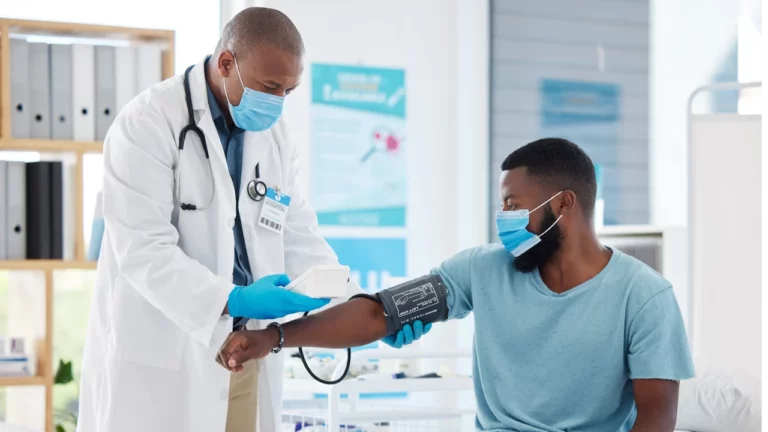Remote patient technology is revolutionizing the management of heart failure, a condition that affects approximately 26 million people worldwide. This technology enhances patient monitoring, allowing for continuous care and early detection of potential complications without the need for frequent hospital visits, giving patients more freedom to live their lives. As a result, remote patient technology not only improves the quality of life for patients but also significantly reduces the burden on healthcare systems by decreasing hospitalization rates and associated costs. This innovative approach at the intersection of healthcare and technology represents a major advancement in the treatment and management of chronic conditions such as heart failure.
Among these, Remote Patient Monitoring technologies stand out for their potential to revolutionize treatment modalities using the many remote patient technology devices there is.
This blog delves into the evolution and impact of these technologies, illustrating how they are set to transform heart failure management by enhancing patient monitoring, reducing hospital visits, and ultimately improving outcomes across the board.
Current State of Heart Failure Management
Heart failure affects more than 6 million Americans, contributing to substantial morbidity and mortality each year. The condition is characterized by the heart’s inability to pump sufficiently, leading to symptoms such as fatigue, shortness of breath, and fluid retention.
Currently, management strategies predominantly focus on lifestyle modifications, medication regimens, and in severe cases, surgical interventions such as heart transplants or the implantation of ventricular assist devices.
Despite these measures, heart failure results in nearly 1 million hospitalizations annually in the U.S. alone, highlighting the need for more effective management solutions. The high prevalence and the significant healthcare costs associated with heart failure—amounting to billions annually—underscore the urgent need for innovative approaches in its management.
What is Remote Patient Monitoring?
Remote Patient Monitoring (RPM) represents a significant advancement in healthcare delivery, leveraging technology to bridge the gap between traditional in-clinic visits. This innovative approach utilizes various digital tools to gather a comprehensive picture of patient health data outside the clinical setting.
Think of it as extending your care team into the patient’s home. RPM employs devices like blood pressure cuffs, weight scales, and glucometers to collect vital signs, weight, blood pressure, heart rate, and blood sugar levels. This data is then securely transmitted electronically, allowing for real-time monitoring and timely intervention by healthcare providers.
The adoption of RPM offers a multitude of advantages. It enhances accessibility to care, empowers improved management of chronic conditions, and potentially reduces overall healthcare costs. For patients with heart failure, RPM can be particularly transformative. By providing a continuous stream of health data, it allows for proactive adjustments to treatment plans, potentially preventing unnecessary hospital admissions. This not only translates to improved patient outcomes but also fosters a more efficient healthcare system by alleviating the burden on hospitals and medical personnel.
Innovations in Remote Patient Technology Devices
Remote patient technology devices have seen significant advancements, driving forward the management of heart failure with innovative solutions:
These Wearable devices, such as smartwatches and fitness trackers continuously monitor vital signs like heart rate and blood pressure. They provide real-time data to both patients and healthcare providers, allowing for immediate intervention if necessary. Recent innovations also include patches that monitor electrocardiogram (ECG) and heart rate variability (HRV), offering detailed insights into cardiac health.
- Implantable Devices
Implantable devices such as the CardioMEMS HF system have revolutionized heart failure management. This device is implanted in the pulmonary artery and measures pulmonary artery pressures, a key indicator of heart failure exacerbation. This allows for preemptive medical adjustments before symptoms worsen, significantly reducing hospital readmission rates.
- Smart Scales and Mobile Apps
Smart scales not only measure weight but also detect fluid retention, a common problem in heart failure patients. Mobile apps complement these devices by allowing patients to track their symptoms, medication adherence, and dietary habits. These apps can alert healthcare providers to potential issues, facilitating early intervention and personalized care plans.
These technological innovations have empowered patients to take an active role in managing their heart failure, while providing healthcare professionals with the tools to offer more personalized, efficient, and proactive care.
Case Study of RPM for Heart Failure Management
The studies on RPM in ETAPES (the name for the French funding program for RPMshow that RPM can really help patients with heart failure. The French study used a system called Satelia® Cardio, focusing on patients who are at higher risk of going back to the hospital. They found that using RPM to keep track of patients’ symptoms through simple questionnaires can help manage their condition better.
Challenges and Solutions
RPM offers significant benefits for managing patient health, especially for chronic conditions. However, the adoption and effectiveness of RPM systems can be hindered by various challenges. The following table summarizes these challenges and proposes practical solutions to help overcome them, enhancing the overall efficiency and acceptance of RPM technologies in healthcare.
| Challenge | Solution |
|---|---|
| Data Accuracy | Implement advanced algorithms and calibration techniques to enhance data precision. Regularly update and maintain sensors and devices. |
| Patient Privacy | Adopt stringent data encryption methods and comply with health data protection regulations (like HIPAA in the U.S.). Ensure all data transmissions are secure. |
| Integration into Existing Healthcare Infrastructures | Develop integration-friendly platforms that can seamlessly connect with existing electronic health records (EHR) systems. Provide technical support for healthcare providers. |
| Patient and Provider Adoption | Conduct comprehensive training programs for both patients and providers. Increase awareness about the benefits of RPM through case studies and success stories. |
| Education and Adjustment to New Technologies | Offer ongoing educational resources and support. Implement user-friendly interfaces and interactive tutorials to ease the learning curve. |
Enhancing Heart Failure Management with DrKumo RPM Technology
DrKumo‘s innovative Remote Patient Monitoring (RPM) technology plays a pivotal role in advancing the management of heart failure. By leveraging AI and ML within its RPM solutions, DrKumo enables precise monitoring of heart failure patients in real-time. This technology facilitates early detection of potential health deterioration, allowing for swift medical interventions that are crucial for patients with heart conditions. DrKumo’s systems ensure continuous tracking of vital health metrics such as heart rate, blood pressure, and oxygen saturation, which are vital for managing heart failure effectively.
Additionally, DrKumo’s RPM solutions are designed to support patients in maintaining their health from the comfort of their homes, reducing the need for frequent hospital visits. This not only enhances the quality of life for patients but also alleviates the strain on healthcare facilities. DrKumo’s commitment to secure, accurate, and efficient health monitoring makes it an essential component in the modern approach to heart failure management, emphasizing proactive patient care and optimized health outcomes.
Takeaways
As we continue to embrace the benefits of technology in healthcare, RPM stands out as a transformative tool for managing heart failure. By integrating advanced monitoring technologies, we can significantly improve patient outcomes and reduce the strain on healthcare systems.
For those looking to implement or learn more about innovative RPM solutions, contact DrKumo for state-of-the-art healthcare technologies that promise better health management from the comfort of your home.








